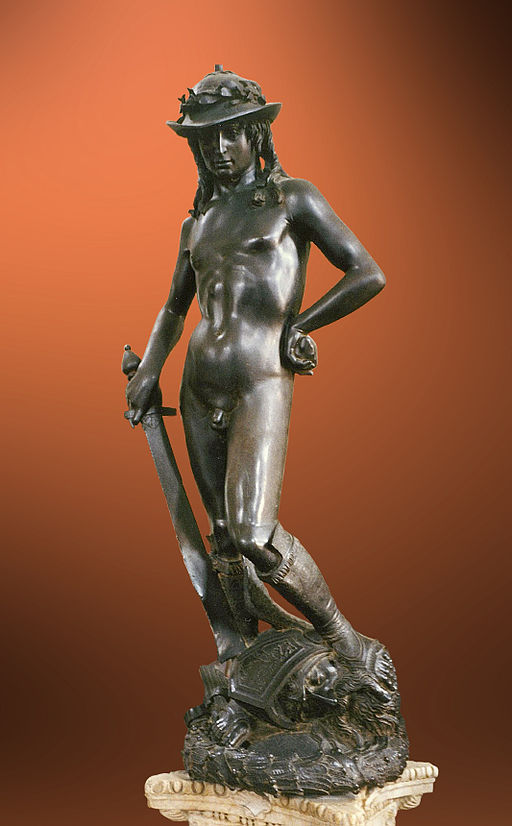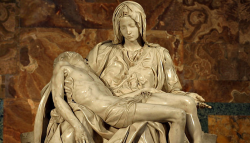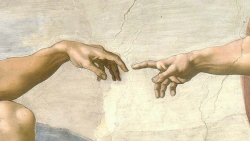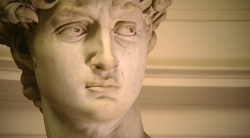Perhaps Donatello’s landmark work – and one of the greatest sculptural works of the early Renaissance – was his bronze statue of David. This work signals the return of the nude sculpture in the round figure, and because it was the first such work like this in over a thousand years, it is one of the most important works in the history of western art.
The work was commissioned by Cosimo de’Medici for the Palazzo Medici, but we do not know when during the mid-fifteenth century Donatello cast it. It was originally placed on top of a pedestal in the center of the courtyard in the Palazzo Medici, so the viewer would be looking up at it from below (unlike the view we typically get of it in photographs).
David is shown at a triumphal moment within the biblical storyline of his battle with the Philistine, Goliath. According to the account, after David struck Goliath with the stone from his slingshot, he cut off his head with Goliath’s sword. Here, we see the aftermath of this event as David stands in a contemplative pose with one foot atop his enemy’s severed head. David wears nothing but boots and a shepherd’s hat with laurel leaves on top of it, which may allude to his victory or to his role as a poet and musician.
Before Donatello’s work, David was typically depicted as a king, given his status in the Old Testament. Here, however, we have a stark change in the way David is depicted. Not only is he shown in the nude, but he’s also a youth. In Middle Ages, nudity was not used in art except in certain moral contexts, such as the depiction of Adam and Eve, or the sending of souls off to hell. In the classical world, nudity was often used in a different, majestic context, such as with figures who were gods, heroes, or athletes. Here, Donatello seems to be calling to mind the type of heroic nudity of antiquity, since David is depicted at triumphal point in the biblical narrative of his victory over Goliath.
As for David’s youthfulness, Donatello has gone back to the early life of the biblical David to depict him, rather than to his later life as a king. It seems that Donatello is trying to associate David’s youth with an innocent and virtuous life. David looks young here – so young, in fact, that his muscles have barely developed enough to hold the large sword – that his victory over his foe is all the more improbable. Could David’s victory have been gained without divine intervention? Donatello’s work seems to imply that the answer is “no” – the victory was God’s rather than man’s.
In any case, Donatello’s David is a classic work of Renaissance sculpture, given its Judaeo-Christian subject matter modeled on a classical sculptural type. It was revolutionary for its day – so much so that it did not get copied right away. The idea of the life-sized nude sculpture-in-the-round evidently took some time to sink in and become an acceptable statue type.
Further reading
Donatello: Sculptor, by Sir John Wyndham Pope-Hennessy
Italian Renaissance Sculpture, by Roberta J. M. Olson




